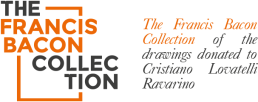London – Monday 6 March, 2017
Francis Bacon and the Crucifixion: lectures by internationally known art critic and historian, Edward Lucie Smith and St. Stephen Walbrook’s priest-in-charge, Revd Jonathan Evens.
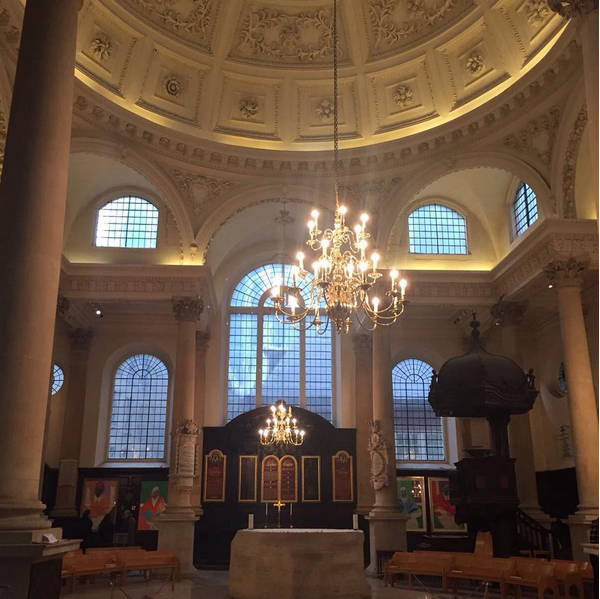
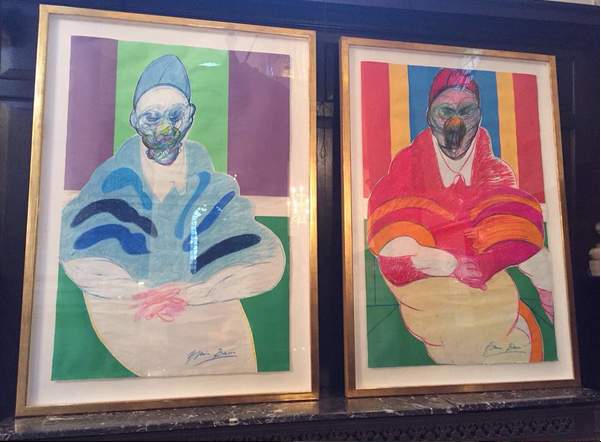
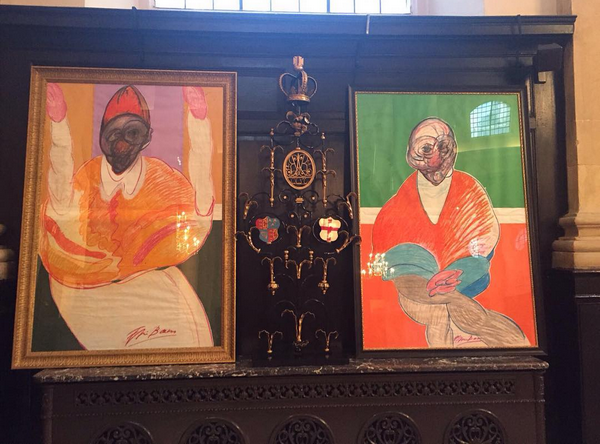
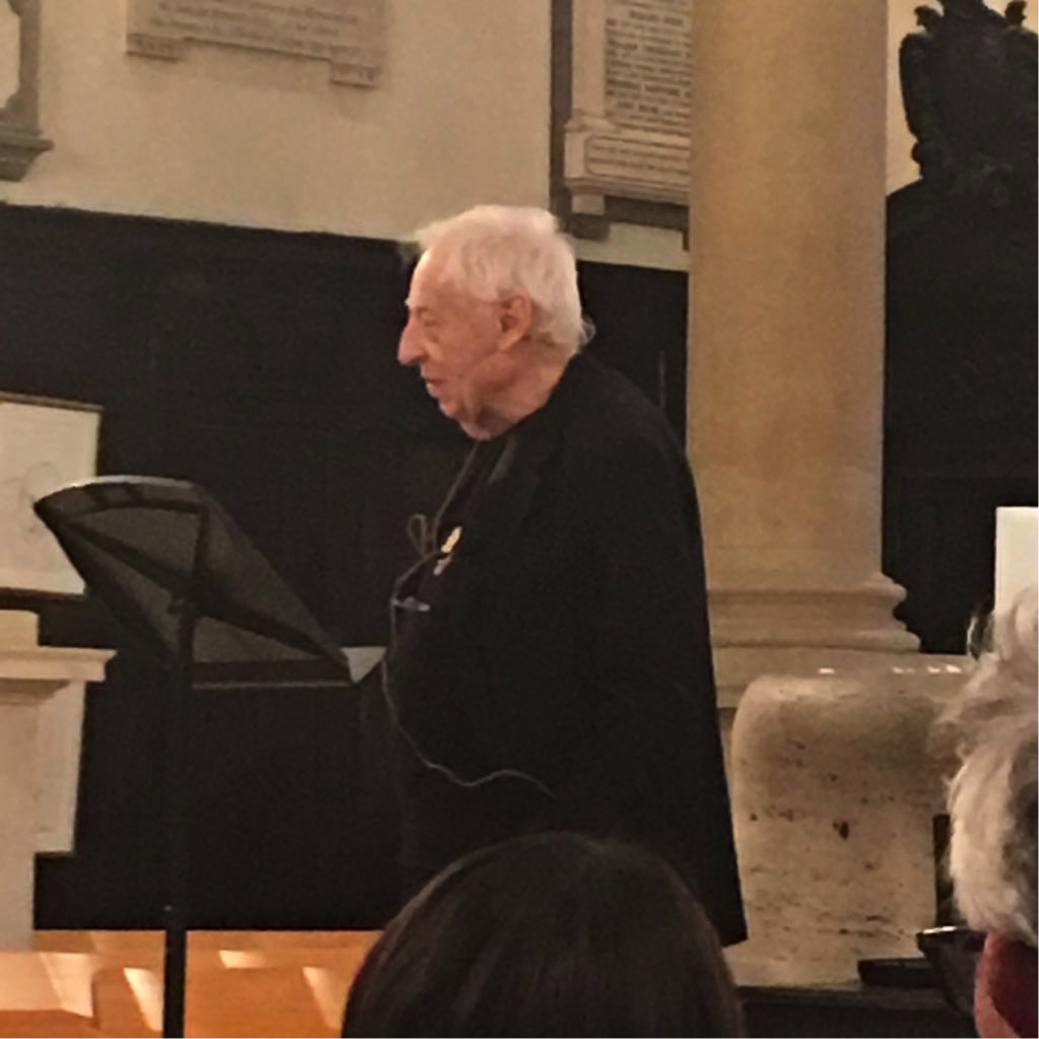 Internationally known art critic and historian, Edward Lucie Smith
Internationally known art critic and historian, Edward Lucie Smith
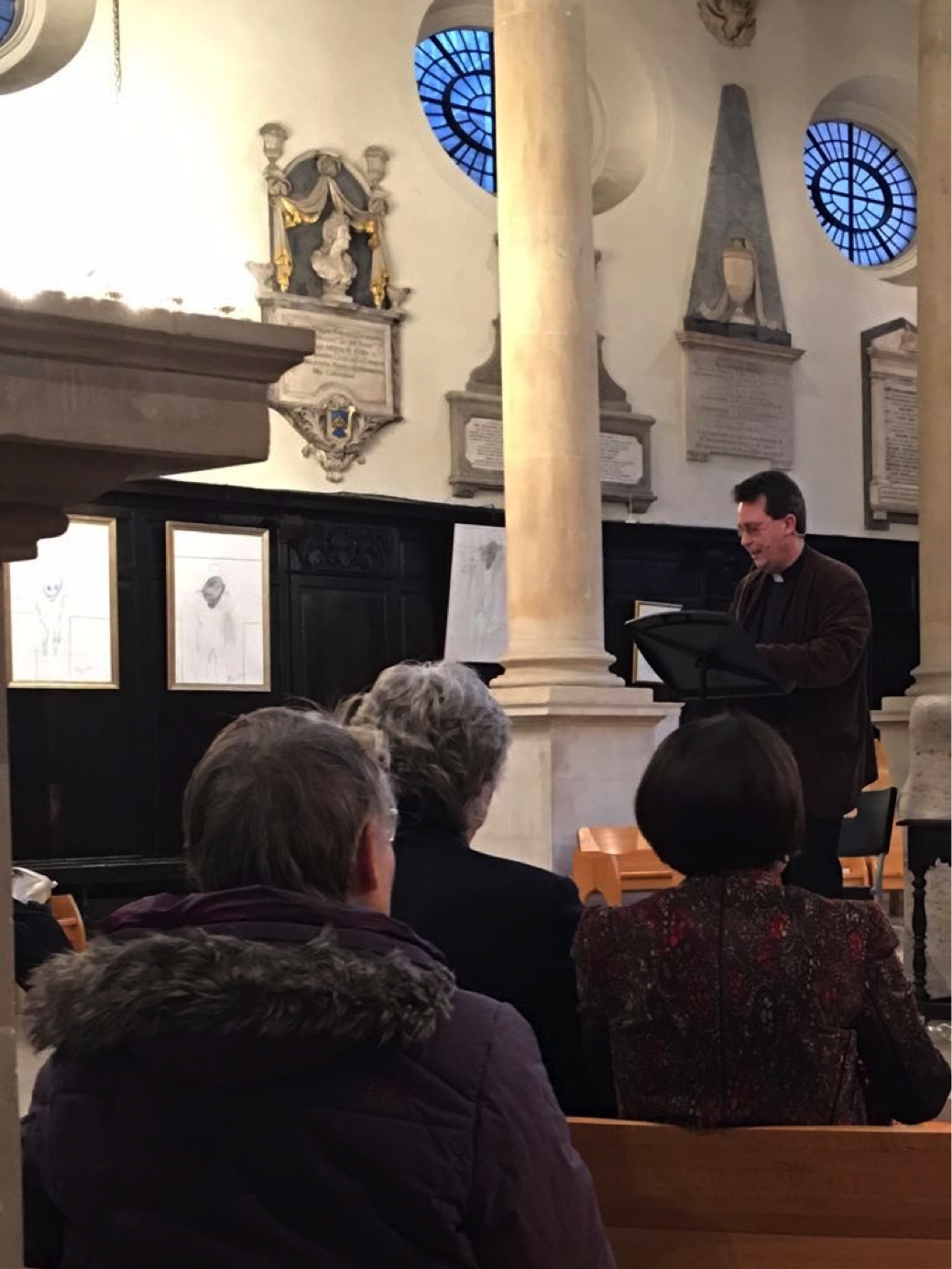 St. Stephen Walbrook’s priest-in-charge, Revd Jonathan Evens
St. Stephen Walbrook’s priest-in-charge, Revd Jonathan Evens
The subject of the crucifixion preoccupied Francis Bacon throughout his life as he made at least eight major Crucifixion paintings, spanning five decades, including the work that launched his career, Three Studies for Figures at the Base of a Crucifixion.
At St Stephen Walbrook we are currently showing crucifixion drawings by Francis Bacon from “The Francis Bacon Collection of the drawings donated to Cristiano Lovatelli Ravarino”. In the piece I have written for the catalogue to this exhibition, I wrote that Bacon’s crucifixion drawings deserve the interest of Christians, as well as that of art historians or art lovers, and reward informed reflection and contemplation. I want now to build on that statement by exploring ways of responding to Bacon’s crucifixions devotionally as we have the opportunity to view some, in the form of these drawings, during Lent.
We are helped in doing so by the recent BBC2 film Francis Bacon: A Brush with Violence where ‘Artist and friend Maggi Hambling suggested that “his work can be seen as a search for God,” while art critic John Richardson reckoned that Bacon is now seen “almost as a religious painter”.’
Gillean Craig explored this theme further in his Church Times review. Bacon, he wrote, ‘brings us face to face with the hard stuff of Christianity: incarnation, flesh and blood naked on the canvas, sacrifice, mystery.’ His ‘images are flayed and visceral, but their agony is that of a shriek de profundis. Not only is this a legitimate religious position: he was also drawn again and again to explicitly religious subjects: the screaming popes and the creatures at the foot of the cross.’ It makes sense, he concluded, ‘to see this continual return to Christian imagery as a profound engagement with, and deconstruction of, the impulse to faith which comes not from inside ourselves but is rather a response to the God who will not let us go.’
The person who has explored the religious aspects of Bacon’s work most fully is Rina Arya, primarily in her excellent book Francis Bacon: Painting in a Godless World. Arya notes that:
‘In spite of his professed atheism, Francis Bacon’s oeuvre is marked by a continued, even obsessive, preoccupation with the sacred. His art represents both a continuity with and opposition to the history of Christianity and the visual arts … Bacon was specifically propelled towards two archetypal symbols of Christianity: the crucifixion and the pope … it cannot be said that the crucifixion was a motif of momentary or passing interest for Bacon. The crucifixion motif visually and conceptually framed Bacon’s art.’
In thinking devotionally about Bacon’s crucifixion images I want to say similar things and the Three Studies for Figures at the Base of a Crucifixion, although it is not the first of Bacon’s crucifixion images, is nevertheless a very helpful place to begin.
With this image we are at the foot of the cross in the place where Mary, the Mother of God, and St John the Evangelist traditionally stand. In this place, as Sue Hubbard has described exceedingly well, we have ‘three writhing, anthropomorphic figures, with their featureless, scarcely human faces contorted into what might be either pain or exquisite ecstasy, set against a background of visceral oranges, reds and blacks … Bacon’s Eumenides [the Furies in Aeschylus’s savage drama The Oresteia] are barely recognisable as human figures, for they have no eyes but only gaping, silently screaming mouths … The open mouth[s] of Bacon’s … figure[s] end … in a savage, snarling, snout of teeth … For Bacon … the open, gaping, screaming wound of the mouth expressed something of our most intense emotional experiences and brought us close to our bestial selves.’
Screaming figures are a key element of Bacon’s oeuvre – in particular, his screaming Popes. As a result, his work is, in some respects, a continuation and recapitulation of Edvard Munch’s classic image ‘The Scream’. Hubbard notes rightly that the mood engendered by these screams ‘is one of bleak isolation and violent angst … a paean to existential despair.’
The pain and anguish of these screams is often related to awareness of the Holocaust. Bacon painted this image in 1944 when ‘rumours of the Nazi death-camps had begun to leak out.’ ‘The work’s exhibition in April 1945 coincided with the release of the first photographs and film footage of the Nazi concentration camps …. Bacon’s triptych reflected the pessimistic world ushered in by the Holocaust and the advent of nuclear weapons.’
Bacon’s image reflects the very real sense that ‘Man Is Wolf to Man’ (Homo homini lupus) and, therefore, enables reflection on the depth of pain caused by the huge variety of ways in which human beings inflict pain on other human beings. The 20th century was rightly called the “century of genocide.” ‘According to one estimate, more than 170 million people were “murdered by governments” between 1900 and 1999—over four times the number killed in the century’s wars. Continuing advances in weaponry, electronic communications, and information technology … make it easier to identify and annihilate target populations. Global population growth, along with the depletion of critical resources such as water, arable land, and fossil fuels, … intensify the potential for political and ethnic conflicts. Other factors such as pandemic diseases and extremist religious ideologies … further destabilize fragile political communities around the world.’ Bacon’s Three Studies for Figures at the Base of a Crucifixion is a howl of pain at such realities and is a cry and lament which can be echoed in our prayers as we too react and respond to the inhuman acts that, as human beings, we frequently inflict on their own kind.
Bacon said that he could not find a subject as valid as the Crucifixion to embrace all the nuances of human feelings and behaviours that enabled him to think about all life’s horror. That is because of the horrors that crucifixion entailed, which are sufficient to stand as symbol to all the horrors of man’s inhumanity to man. William Barclay, in his commentary on the Gospel of John, wrote that ‘there was no more terrible death than death by crucifixion.’ ‘Even the Romans themselves regarded it with a shudder of horror. Cicero declared that it was “the most cruel and horrifying death.” Tacitus said that it was a “despicable death.”’ That was because it was the death that was ‘most dreaded in the ancient world, the death of slaves and criminals.’
But the cruelty and horror of this way of death was primarily in the physical agony endured by the crucified. In preparation for the nailing of the feet, Jesus would have been lifted up and the crossbar fixed to the upright post. Then with legs bent at the knee, a single nail was used to pierce both feet, one foot being placed over the other. There was severe nerve damage and the pain caused was intense. The executioner took care to ensure that neither the wounds to the wrists or feet caused substantial bleeding, since no major arteries were ruptured, so that death would be slower and the suffering longer.
Now nailed to his cross, the real horror of crucifixion began. When the wrists were nailed to the crossbar, the elbows were intentionally left in a bent position so that the crucified man would hang with his arms above his head, the weight being taken on the nails in the wrists. Obviously this was unbearably painful, but it had another effect: It is very difficult to exhale in this position. In order to breathe out, and then take in fresh air, it was necessary to push the body up on the nailed feet. When the pain from the feet became unbearable, the victim would again slump down to hang by the arms. A terrible cycle of pain began: hanging by the arms, unable to breathe, pushing up on the feet to inhale quickly before again slumping down, and on and on.
This tortured activity became more and more difficult as Jesus’ back was scraped against the upright post, as muscle cramps set in because of the inadequate respiration, and as exhaustion grew more severe. Jesus would have suffered in this manner for several hours before, with a final cry, he died.
The scream of pain that we see depicted so powerfully in Bacon’s painting is a doorway into the pain endured by Christ in his sacrificial death upon the cross. Similarly, these crucifixion drawings that surround us also speak of that same agony of suffering borne by Christ for our sake. In these drawings “the central figure of Christ is positioned very high up and isolated.” This positioning was of great importance to Bacon in his depicting of the crucifixion as it enabled a focus on the distortions of the face as the primary means of expressing emotions of horror at the suffering. The majority of the faces in these crucifixion drawings are heavily obscured; shaded, shadowed and covered by circular lines rendering these images almost featureless. These drawings can, perhaps, be understood as images in which horror of torture reduces Christ to nothingness; the absence of expression in the absence of God.
‘As Rina Arya … writes of Bacon’s treatment of crucifixion, “he looks behind the sanitised veneer of aesthetic representations of the Cross and takes the viewer back to the violence and brutality of the cross.”’ Ryan Johnson has noted that, ‘What Bacon painted in 1944 in Three Figures at the Base of A Crucifixion … clearly spells out the spiritual and physical reaction to the death of Christ in Christian tradition.’ ‘The agony and pain of the three figures reflects … the terrible death of Jesus on the cross.’
Johnson then also notes ‘a notable absence in the triptychs: the lack of a cross.’ ‘Three Figures at the Base of a Crucifixion reads very clearly as a savage depiction of three forms with garish mouths. But the lack of a cross, some focusing force … is an existentialist crisis at its finest, with no clear cause and effect.’
‘Where does the absence of a cross lead us’, he asks, and suggests that ultimately, ‘we may be forced to see the creatures’ pain as mirroring the artist’s pain.’ ‘Perhaps this is where the Crucifixion begins to work as a symbol of Bacon’s internal suffering. In the end, Bacon’s atheistic worldview affirms, there is no God. The Christian elements of the painting make the work all the more tragic. The mourners anguish over a God who died and will not rise again. It is a way to make Bacon’s feelings the subject of the Crucifixion, to place him at the cross in the place of Christ, as it were. The end result here is that the cross becomes a self-inflicting weapon of torture for Bacon himself.’ Similarly, Arya has argued that Bacon paints in a godless world, a world after the death of God as heralded by Hegel and Nietzsche. In the catalogue to this exhibition Cristiano Lovatelli Ravarino recalls Bacon stating that he ‘would wish NOT to be a non-believer’ and recounts a story of Bacon speaking about religion in terms of both attraction and repulsion viewing himself as likely to be rejected by God whilst longing for acceptance.
Leaving to one side the question of whether God would reject one who wishes not to be a non-believer (something, I believe, not to be the case), this is essentially an illustration of Arya’s argument; that what Bacon honestly depicts here is humanity’s cry of pain in the face of what seems to be a Godless universe. In terms of the Gospel narrative, Bacon locates us in Holy Saturday with the death of all that Christ’s disciples had hoped and longed for as God is dead without, as yet, the hope of resurrection.
To take us into this place Bacon uses distortion as his primary tool. In Three Studies for Figures at the Base of a Crucifixion, as we have seen, he focuses attention on the cry of pain formed by the mouths of those at the base of the cross. In the crucifixion drawings he obscures the face of Christ; using, as we have already reflected, shading, shadows and circular lines to render these images, ultimately, almost featureless. These drawings can, perhaps, be best understood as images drawn from the dark night of the soul in which all images, and maybe also expressions and features, are left behind in order to encounter the reality of God as opposed simply to images of God. The horror of torture reduced Christ to nothingness; the absence of expression in the absence of God. Yet Christ travelled to this place of nothingness out of love for humanity, meaning that these expressions of absence are actually emanations of love. In these images Bacon depicts Christ in that place where love has rendered God abandoned, Godless, nothing and nowhere.
For Bacon, the search for God in his work that led him to obsessively draw and redraw the crucifixion may have left him in a place of not knowing, of searching without the sense of finding. That place can be experienced as godless, the death of God as depicted by Nietzsche; but it can also, if Dionysius the Areopagite and St John of the Cross become our guides, lead us to encounter the reality of God in the absence or death of God and of all images of God.
As we view these distorted human visages created by Francis Bacon to depict the death of God, it is my hope that we, too, cry out in pain and anguish at the reality of suffering in our world and at the depth of identification with human suffering that was endured by God on our behalf; but that, in that identification with pain and death, we also encounter the God who, I believe, is to be found when pain and death strip everything from us leaving us nothing and nowhere but in the hands of the God who through love has gone before us to that same place in order to meet and greet us there.
St. Stephen Walbrook’s priest-in-charge, Revd Jonathan Evens.
